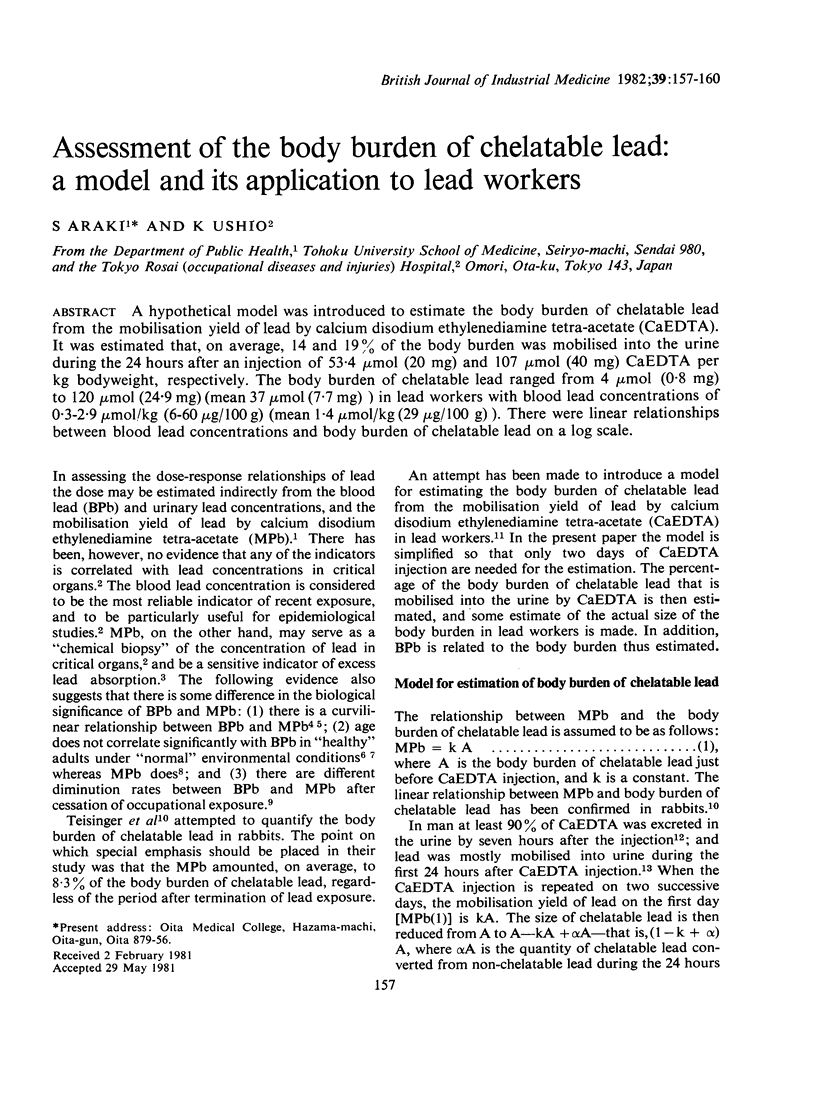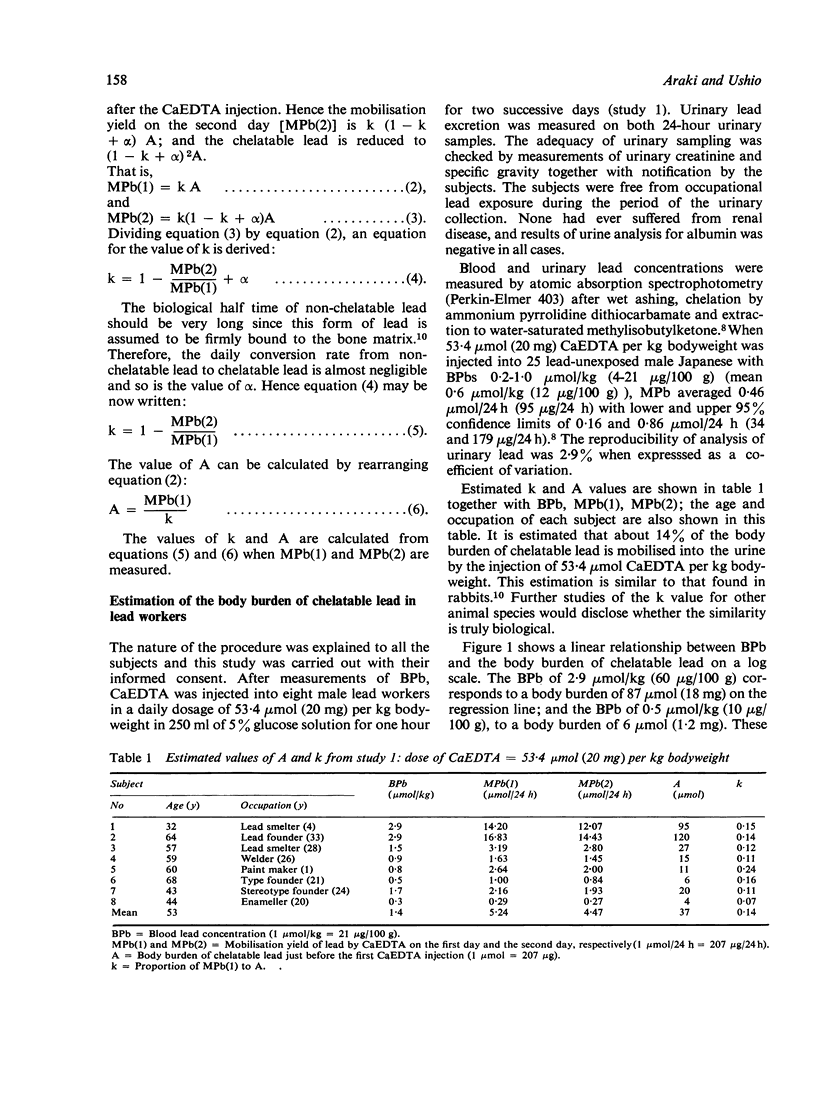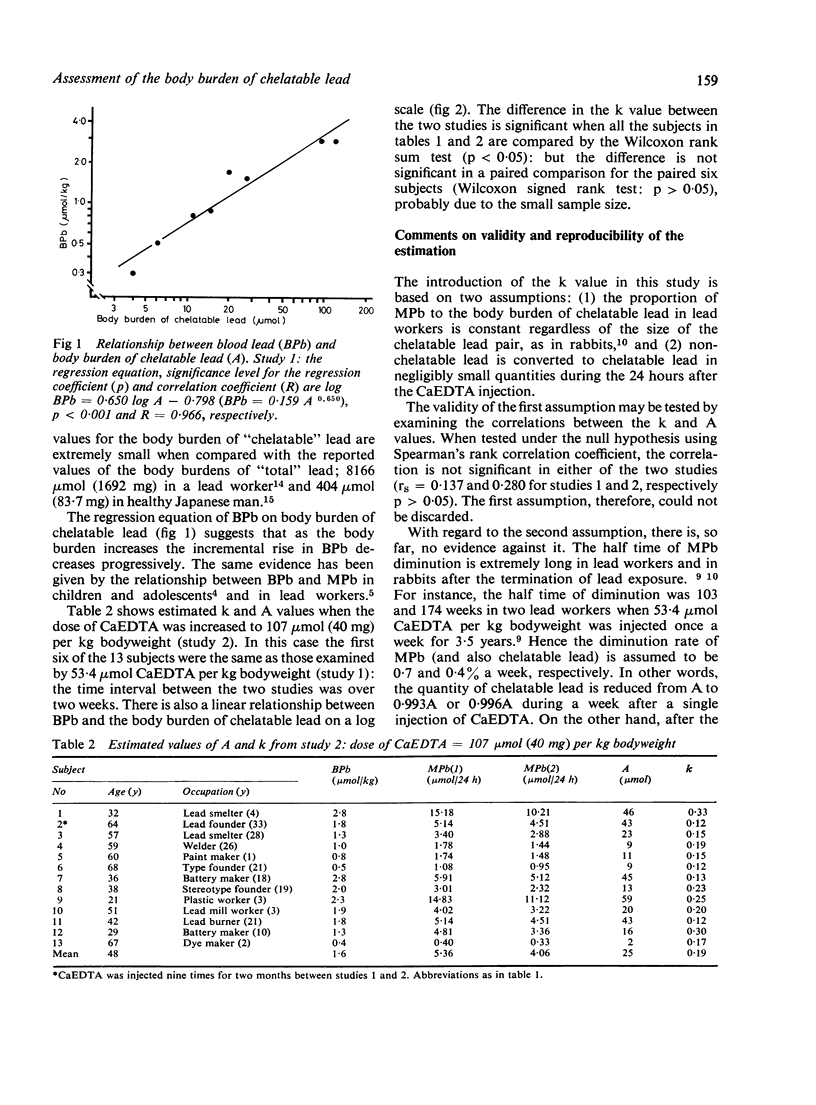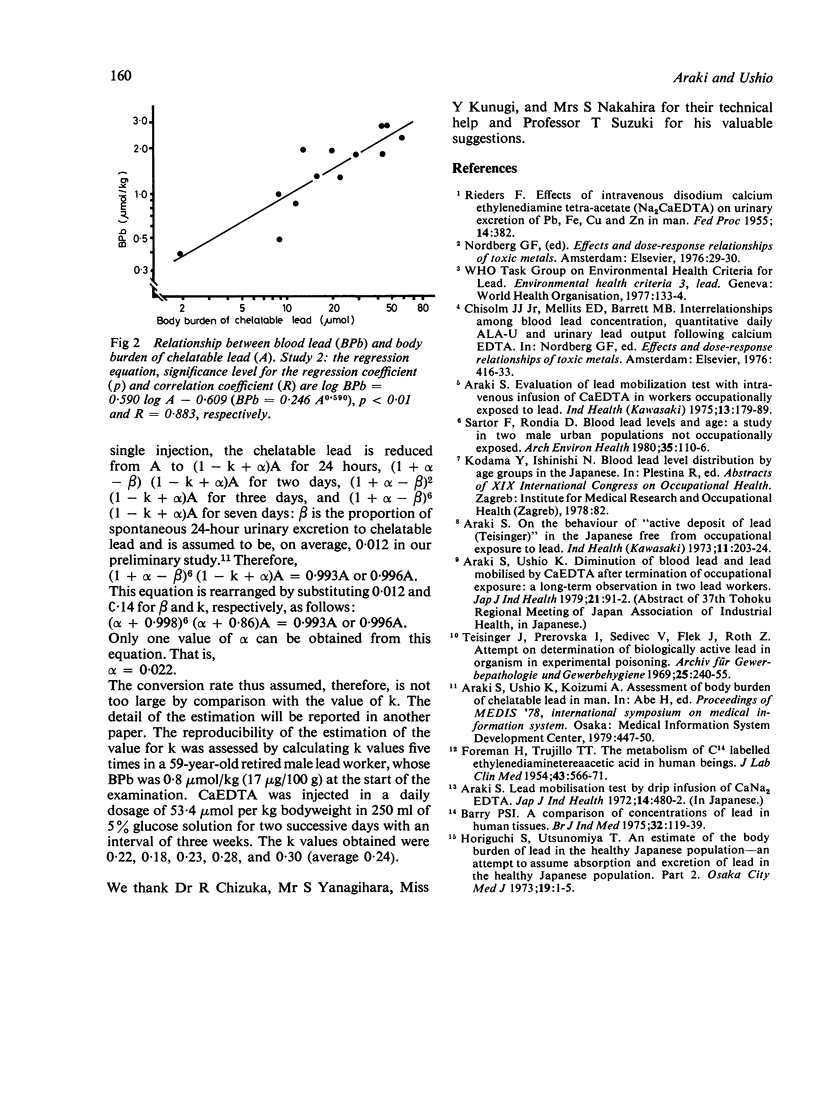Abstract
A hypothetical model was introduced to estimate the body burden of chelatable lead from the mobilisation yield of lead by calcium disodium ethylenediamine tetra-acetate (CaEDTA). It was estimated that, on average, 14 and 19% of the body burden was mobilised into the urine during the 24 hours after an injection of 53.4 mumol (20 mg) and 107 mumol (40 mg) CaEDTA per kg bodyweight, respectively. The body burden of chelatable lead ranged from 4 mumol (0.8 mg) to 120 mumol (24.9 mg) (mean 37 mumol (7.7 mg) in lead workers with blood lead concentrations of 0.3-2.9 mumol/kg (6-60 microgram/100 g) (mean 1.4 mumol/kg (29 microgram/100 g)). There were linear relationships between blood lead concentrations and body burden of chelatable lead on a log scale.
Full text
PDF



Selected References
These references are in PubMed. This may not be the complete list of references from this article.
- FOREMAN H., TRUJILLO T. T. The metabolism of C14 labeled ethylenediaminetetraacetic acid in human beings. J Lab Clin Med. 1954 Apr;43(4):566–571. [PubMed] [Google Scholar]
- Horiguchi S., Utsunomiya T. An estimate of the body burden of lead in the healthy Japanese population. An attempt to assume absorption and excretion of lead in the healthy Japanese population. 2. Osaka City Med J. 1973;19(1):1–5. [PubMed] [Google Scholar]
- Teisinger J., Prerovská I., Sedivec V., Flek J., Roth Z. Attempt on determination of biologically active lead in organism in experimental poisoning. Int Arch Arbeitsmed. 1969;25(3):240–255. doi: 10.1007/BF00678314. [DOI] [PubMed] [Google Scholar]
- Tolonen M., Hernberg S., Nurminen M., Tiitola K. A follow-up study of coronary heart disease in viscose rayon workers exposed to carbon disulphide. Br J Ind Med. 1975 Feb;32(1):1–10. doi: 10.1136/oem.32.1.1. [DOI] [PMC free article] [PubMed] [Google Scholar]


